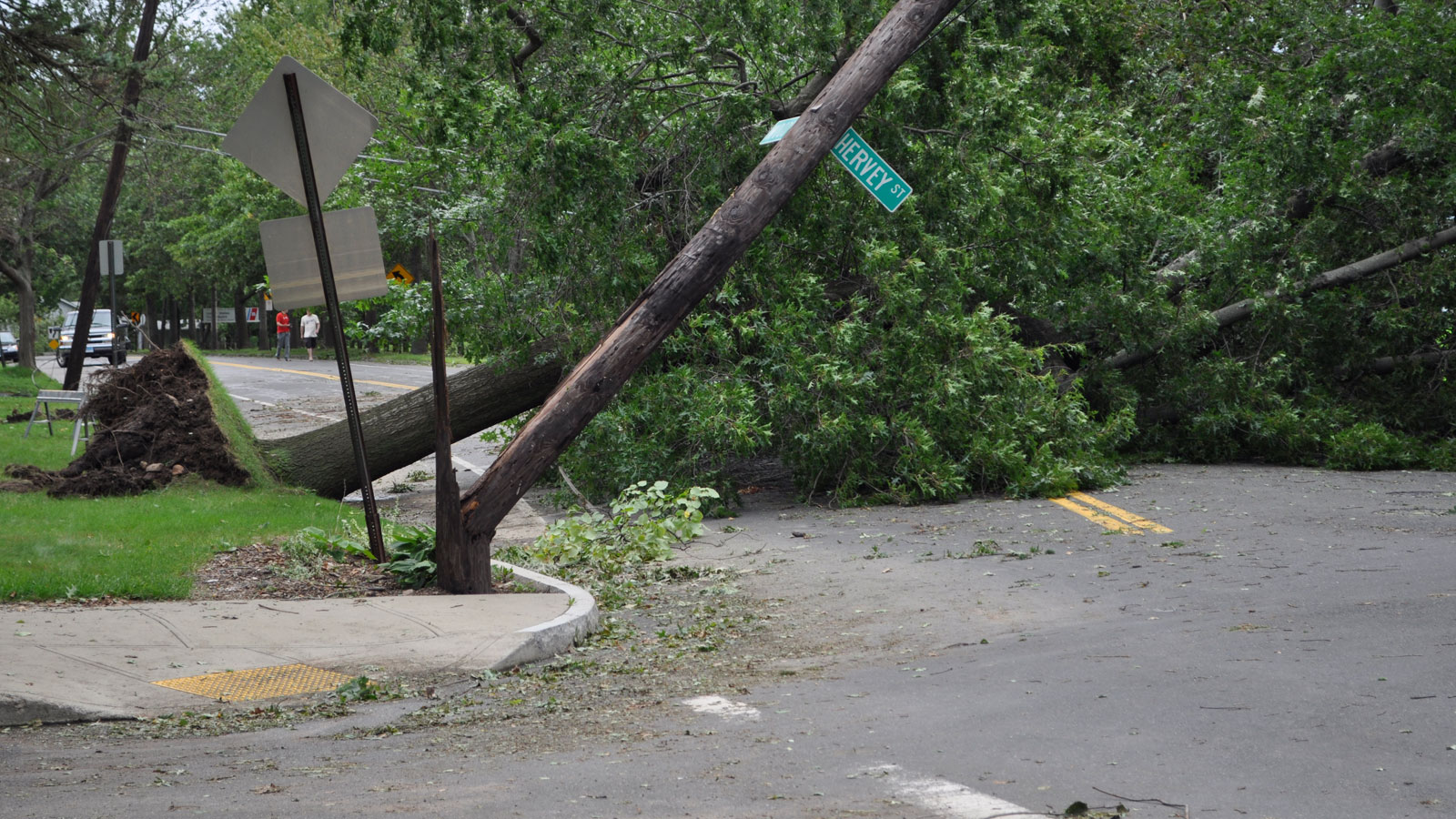In 2011, during Tropical Storm Irene, more than half of all Connecticut households lost power. Ninety percent of those outages were caused by downed trees and limbs.
“We have a lot of overly mature roadside forest, and it’s not surprising that trees in that condition of forest fall down. But the problem is that they’re on top of our roads and our power infrastructure,” says Amanda Bunce, a graduate researcher at the University of Connecticut.
She says utilities often trim branches that overhang power lines. But tall trees 50 feet away can still fall and take down a line.
“We thought it would be a better idea to look at the forest on the roadside as a whole,” she says.
So Bunce is part of a team working with utilities and landowners to test a new approach for managing roadside forests as climate change brings more extreme storms.
At about a dozen sites, the team is analyzing trees up to about 100 feet back from the road and removing the ones at greatest risk of falling.
“We take out ones that have disease, that have extreme leans towards the road, that are perhaps at the end of their life span,” she says.
They leave behind healthy trees and a roadside forest that can better withstand future storms.
Also see: Why the power is out in Texas … and why other states are vulnerable too
Reporting credit: Sarah Kennedy/ChavoBart Digital Media
Source link


